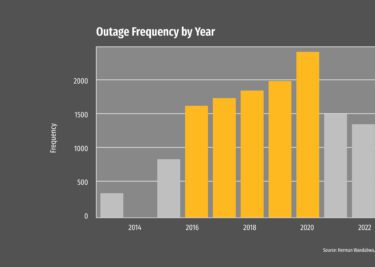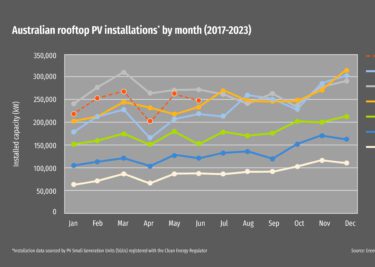One of the things we often get asked about here at Natural Solar is metering. It’s a little bit tricky, so let us break it down for you:
What is net metering?
When energy is generated by the solar panels on your roof, the power will first be sent to your house to be used by your appliances, lights, etc. Any excess energy that isn’t used will then be sent to the electricity grid and you’ll be paid a rebate for supplying this power.
Net metering measures how much energy you take from the grid as well as how much energy your solar system puts back in and charges or pays you accordingly (depending on whether you have used more or less energy that your panels generated).
What is gross metering?
When energy is generated by the solar panels on the roof of your property, it’s sent directly to the electricity grid where it will be available for use by anyone connected to the grid.
When your property needs power, it will draw the energy for this directly from the grid. Gross metering is measured with two separate meters (one measuring the energy that is feed into the grid and the other measure the energy used by your property) so it’s easy to assess what comes in and out.
Gross metering is only available in ACT and NSW, and at the end of 2016 all households in NSW that are currently on gross metering will be required to change over to net metering.
What are Feed In Tariffs?
The Feed In Tariff is the rebate a home owner is paid in return for the energy they feed into the electricity grid, and it’s determined state by state. The tariff is paid partly by the state government and partly by the energy companies that are using the power you provide.
The Gross Feed In Tariff in NSW ranges from $0.20/kWh – $0.60/kWh, while the Net Feed In Tariff varies across the country from $0.05/kWh – $0.08/kWh.
Can I add more solar panels to my existing solar system to get a bigger rebate?
Yes, you can get the rebate for a solar panel system of up to 10kW – but, unfortunately, you can’t start a solar energy farm in your backyard.
How does the Tesla Powerwall help with metering?
The Tesla Powerwall makes a huge financial difference because it allows households to store power for future usage instead of selling it back to the grid.
This is important because, while you do get a tariff in return for the power that you provide to the grid, there is a good chance that any power you later draw from the grid will be significantly more expensive (especially if you need it during the peak times of 2-8pm from Monday to Friday).
So storing up the power your solar system generates in the first place (in a Tesla Powerwall) and having it ready to go for free at any time will help you to save money in the long run.
So, which is best: Gross or Net?
Generally speaking, net metering with solar energy is the best way to go – not only because it is the only system available in most states and territories in Australia but also because, when combined with a Tesla Powerwall, it’s the system most likely to provide you with a continual source of clean, affordable energy.
If you have any other questions about metering, feel free to get in touch with us at Natural Solar any time and we would be happy to talk you through it. You can also get an instant online quote for a Tesla Powerwall solar system here and view the Tesla Powerwall FAQs here.
Get your solar quote now!























